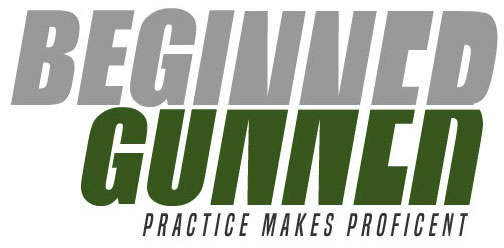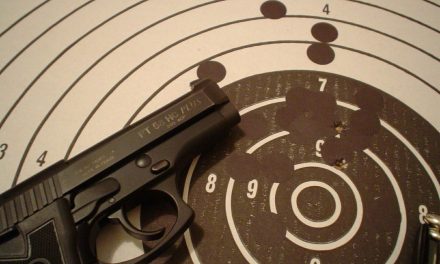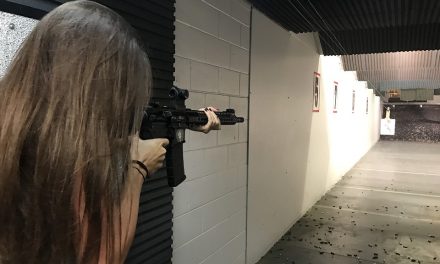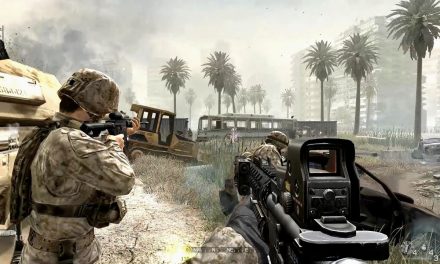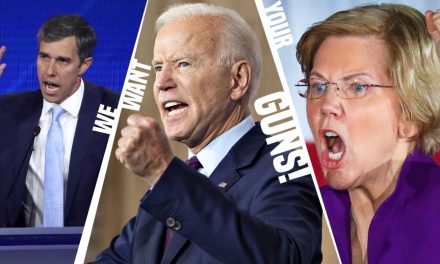“When the chips are down, these… these civilized people, they’ll eat each other”- The Joker.
The Joker, iconic DC Comics super-villain and existential philosopher, challenges human fragility, assured that when faced with the smallest stimulus of hardship or fear, humans regress back into a primal species. Is his conclusive analysis correct? In the current terror which the COVID-19 pandemic has inflicted upon mankind, many have done their best to remain calm, however many of us storm grocery stores for supplies and food, hoarding toilet paper, hand sanitizer, and treating the slightest form of human contact as a fatal allergic reaction. Panic is the word, whether we like it or not.
Firearm Sales Spike
In addition to toiletries and food stuffs, firearm and ammunition sales have seen an exponential spike. First-time buyers worldwide rush to local retailers for lethal weaponry and stockpile cases of munitions to prepare for the inevitable apocalypse. The international response towards the COVID-19 pandemic has never been seen before in recent history, with many governments closing their borders and quarantining their citizens to their homes. However, this isn’t the first instance where, the U.S. in particular, crisis tempts individuals to arm themselves. Is there something different that has happened in the U.S., which has caused such a rise in sales, or is it simply the level of panic and uncertainty of the future that has pushed citizens to lethally protect their property. How much does fear equate to a psychological response leading to such actions?
Although I am not an expert in psychology, studying human behavior, nor criminology, studying criminal motives, credible sources have revealed answers to such questions. In the U.S. alone gun and ammunition sale records have been broken in only a few months and continue to rise. Unfortunately for many other businesses, President Donald Trump and his administration have determined that gun stores and retailers are a part of the “essential” businesses list per Kelly McLaughlin, Business Insider journalist. Important to note too that “guidance was issued by the Cyber-security and Infrastructure Security Agency (CISA)…[stating] its list was not a national mandate but said it was issued as guidance for local and state governments when deciding their own lists of essential and nonessential businesses”.
More on: List of essential and nonessential businesses – Business Inside Journalist
News and media outlets have posted videos, reporting lines stretching from outside arms retailers and down adjacent streets. Sources even report individuals standing and waiting from the time of a location’s opening until its close, only to find that most of the inventory has been depleted, with retailers projecting that they’ll be unable to resupply for months due to their suppliers quickly losing inventory as well.
Gun store owner Mark Schlofer, Eastern Arms and Outfitters (Albrightsville, Pennsylvania), told Haley O’Brien, PBS journalist, that “ In the last two weeks, [he] sold three months of inventory.” Online retailers aren’t excluded from the recent boom in sales either. John Hopkins Bloomberg School of Public Health site globalhealthnow.org reports that “one online ammunition retailer, ammo.com, reported more than a 500% increase in transactions from February 23rd to March 26th, compared to the previous 32-day period. The company’s state-to-state map noted its ammo sales by late March jumping more than 1000% in Oklahoma, Louisiana, Mississippi, Delaware, and Vermont”.
More than 500% increase in ammo sales
Increased Background Checks
The site also reports how there has been an overwhelming increase in federal background checks as well. The site reported that “the FBI’s National Instant Criminal Background System (NICS) shows more than 2.8 million gun background checks in February 2020- up from just 2 million in [February 2019]”. Currently, United States law requires that all those purchasing firearms from a legal retailer must complete a federal background check, however this isn’t as strictly enforced at gun shows, and nonexistent when purchasing weapons from illegal sources. These numbers also doesn’t correlate directly to actual sales, since checks are done for the issue and re-issue of gun permits as well, in addition, and checks may be done with out a transaction following afterward. Sources gathered also state that many of the buyers are not previous gun owners, but first time buyers. A Los Angeles Times article reported that even migrant workers like truck drivers are buying an exorbitant amount of firearms and ammunition, in turn severely depleting inventories.
Is Fear THE factor
With so many retailers experiencing so much overnight economic success, what is the driving force to people’s spending habits? Research has told us that there isn’t a clear, single answer as to why first-time buyers decide to purchase firearms in the first place, nor why previous owners are continuing to add to their collection. Professor Gary Kleck, Criminology at Florida State University stated, “Studies assessing the effect of fear/risk and criminal victimization on gun ownership have obtained wildly varying results” (6).
While someone readily saying fear is correct, it is too broad of a concept and should be used more as a blanket term. This is mainly due to the fact that, when researching its effects on the human populace, specific factors leading to a person becoming fearful are too numerous to consider. Research tells us some of the most common are:
- Uncertainty of the future
- Rising recession of available supplies and goods, increasing one’s lack of trust in potentially predatory individuals
- Lack of trust in the government
- Crime and need for self-protection
- Civil Unrest in times of crisis
- Pressure/Panic buying due to diminishing resources
- Exercising their Constitutional Rights (US, Mexico, Guatemala)
- Belief in a dangerous world (Psychological trauma/stress)
Juxtaposing fear to gun sales does have some direct correlation, proven by this year’s statistics alone with the COVID-19 pandemic. However, there have been other instances that follow this same trend, specifically mass shootings and overall gun violence. According to the Gun Violence Archive (GVA), an online archive of gun violence incidents collected from over 7,500 sources daily, that from 2013-2019 there have been over 2,100 mass shootings (avg. <350 per year) (including 31 mass murders (data was presented separately for 2019)), nearly 87,000 gun violence deaths (avg. <15,000 per year), and nearly 282,000 gun violence incidents (avg. <50,000 per year (including suicides)).
Using this information and comparing it to the US Death Rate, MacroTrends, an online archive of global metrics, from 2013-2019 there have been nearly 8.8 million recorded deaths in the United States. Although, gun violence related deaths do not even make up 1% (0.989% exact) of the recorded US deaths across this 6 year time period, knock on wood, what this statistical analysis doesn’t measure is the psychological effects that mass shootings, crisis and similar instances have on a population.
PTSD – a Cause for Buying Firearms
Psychological traumatic stress can have devastating effects on an individual, group, society, and with the community response to the COVID-19 pandemic, mankind as a whole. The American Psychiatric Association (APA) defines Post-traumatic Stress Disorder (PTSD) as “a psychiatric disorder that can occur in people who have experienced or witnessed a traumatic event such as a natural disaster, a serious accident, a terrorist act, war/combat, rape or other violent personal assault”. While this is classified as a disorder, a severe, for some chronic, form of psychological stress, the APA reports that psychological trauma can occur in all people in variable intensities, with symptoms including intrusive and negative thoughts and feelings, and arousal and reactive symptoms.

When individuals hear about evil or disasters in close proximity to their circle of influence (homes or nation), those which can potentially be uncontrollable, a flight or fight response is initiated. Individuals inevitably will either move further away from a problem, or take precautions in order to protect themselves and their circle of intimacy. Mark Schlofer recognized this with the rise in buyers stating many never owned a gun before, nor had any experience using firearms, yet were sure that they needed them, connecting the mindset of the customers to “grocery store hysteria”. A Macomb Daily article found that many are concerned about simply acquiring the arms and rounds, without any plans of actual use. Kenneth Michiewicz, associate professor of psychology at Muhlenberg College, stated that the “panic buying” is about filling a need, not necessarily a purpose, and being without a weapon(s) makes individuals feel less secure. The uncertainty of the future and the fear of the potential unraveling of the current social and political structure entices people to make sure they are adequately prepared for the worst, which many believe has yet to come.
A Cry for Help
In the US, observing the hardships and cries for help from other nations, increased citizen’s lack of trust in potentially desperate people, awaiting inevitable civil unrest and or aggressive government intervention. The speed at which information is able to travel with innovations such as internet and social media, can expose “safe” citizens to “hostile” environments, raising alarm.
The internet and social media, can expose “safe” citizens to “hostile” rather quickly
When people see others in pain and being hurt, they readily associate this pain to potentially affecting themselves and their circle of intimacy, at alarmingly fast speeds, which can mentally escalate their sense of urgency.
The rise of mass shootings might insight panic
In the last 20 years, there has been a significant trend in the rise of gun sales, when a mass shooting involves young children or public events. Maria Jose Rozo Osuna provided a chart analyzing spikes in gun sales during times before and after mass shootings in her theses, Mass Shootings and Gun Sales: A Study on the Influence of Red and Blue Power, showing gun sales at their highest during the Sandy Hook Elementary School Shooting in 2012, where an armed gunman fatally shot 26 people most notably young children.

A similar rise in sales occurred, during the mass shooting at the Inland Regional Center (IRC) of Public Health, where 80 employees were hosting a Christmas party. While these two incidents reported the highest numbers out of the analysis, there is a consistent trend in sale spikes immediately after such tragedies, although heightened concerns may only be temporary. The lasting effects of these incidents is the increased belief in a dangerous world, as found in a 2016 study (May 31- June 22), researching the impact of the 2016 Orlando mass shooting of Pulse nightclub on non- and previous gun owners.
Asking the new gun owners
Participants were asked a series of questions surrounding gun ownership, the importance of its ownership, and thoughts on the existing and future need of federal gun policies before and after the tragedy. Surprisingly, conclusive analysis found while belief in a dangerous world and possible victimization increased, non-gun owners, post-shooting, did not find a significant increase in the need to own a gun, with previous gun owners recording similar results. Discussion found that this reasoning for non-gun owners may be because they may have lost confidence in the effectiveness of personal gun ownership, against such tragedies. Previous gun owners may not have seen an increase due to the fact they already owned a firearm, they felt it unnecessary to purchase a second, and overall it could be that while the shooting was tragic, those affected did not have a lasting impression on American citizens as a whole. With this in mind, the role of news sources and media outlets play a crucial role in the spread or suppression of panic as well.
The validity and lack of sensationalization of these incidents is the responsibility of those who report them to society, being primary sources, depending on their time of publishing and credibility. Exaggerated stories and manipulated testimonies in order to inflate or deflate its newsworthiness will have a paramount effect on the public response. Any incident or tragedy involving crime, distress, or death manifest some effect on a community in its aftermath, independent of polarizing ethics, as these reactions are the driving force of new regulations, campaigns and policy. While a specific group of victims may have an elevated effect on a community such as young children, others may not garner the same type of support, yet each pose some sort of lasting repercussions.
Firearms and COVID-19
Suspicion of aggressive government intervention raises the panicking consumers need for armed protection as well. During the COVID-19 crisis, governments internationally have issued mandates and policies for the containment of the virus through isolation and quarantine. With the rapid closing of businesses and threats of fines for those who loiter, presenting potential risk of spreading infection, many fear their governments’ fated use of “emergency powers” and enacting martial law.
In the U.S., images and videos spread through social media and news sources of military vehicles, and recently reports of possible deployment of the national guard have raised suspicion increasingly. The United States is only 1 of 3 countries, Mexico and Guatemala, in which its Constitution gives rights to its citizens to freely acquire weaponry. When asked about their purpose for buying firearms, many Americans interviewed said it is because it is their right as an American citizen. Lawrence Keane, senior vice president and general counsel for the National Shooting Sports Foundation (NSSF), stated that thousands of Americans are exercising their right during these uncertain times, and “Americans must not be denied the ability to exercise that right to lawfully purchase and acquire firearms during times of emergency”.
Pro and anti-gun rights legislation has been a consistent debate in U.S. Congress, with many activists and support groups protesting for the approval or repeal of policy, especially during times of crisis. There are those who believe that is the fact that we are able to freely purchase firearms and ammunition, especially AR-15 assault rifles, that we equip potential domestic terrorists; while the counter-argument affirms that it is that very right which keeps us secure against those wish to take our peace away. During the course of the U.S. COVID-19 pandemic, the masses fear the crumbling of our established political structure under the gravity and stress of an increasingly ambiguous national situation. With the COVID-19 virus expected to reach is peak in the U.S. in May 2020, many are not willing to wait see their home become prey to future road warriors, and a dissolving sense of morality. Not exercising their right, numerous U.S. citizens feel like their loved ones are becoming increasingly vulnerable, and in response millions have taken it upon themselves to put their protection in their own hands.
While people have yet to begin to eat each other as the Joker predicted, knock on wood, the social climate for various individuals is growing dire. Where fear festers in the wake of ambiguity and panic, people tend to regress to primitive mindsets. The Fear of Crime Interpretation‘s two assumptions, “first, that people’s fear of crime motivates them to buy a gun for protection; and second, that mass shootings increase people’s fear of crime,” reveals that people will protect what’s theirs no matter the cost. When citizens sense that their circle of intimacy is in danger and vulnerable, they quickly begin to distrust those distant to them. They arm themselves without hesitation, stockpiling their homes with weapons and supplies in preparation for the coming apocalypse. Fear slowly molts the civilized skin of individuals, until that shell is cast aside, and the animal revealed has only one purpose, to protect its young and its nest by any means necessary.
Epilogue
During these times of distress are you prepared for the worst? Are you ready to handle any situation which may be poised against you and your loved ones? Beginner Gunner is your solution to equipping you with the necessary tools and tutorials in order to practice proper gun safety, handling and education. What are the best firearms for home defense? What is the Second Amendment, and is it still necessary in modern times? What is the proper way to store firearms in your home? Follow these links to some of our other posts, increase your gun knowledge and become proficient!
